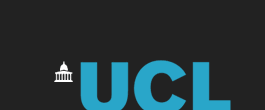www.Modell-Almanac.net
Caveat
The Almanac provides only conservative estimates based on best available data.
Individual estimates may be based on incomplete information, and are open to continuous revision.
We welcome contributions and corrections from users to improve the available picture.
Modell's Haemoglobinopathologist's Almanac is a research output of the UCL Centre for Health Informatics & Multiprofessional Education (CHIME)
Modell's Haemoglobinopathologist's Almanac
Global epidemiology of haemoglobin disorders (thalassaemias and sickle cell disorders)
The World Health Organisation recommends provision of services for control of haemoglobin disorders (see World Health Assembly resolutions 59.20 and 63.17), and an increasing number of countries are seeking to establish services for patient care, combined with carrier screening, risk information and genetic counselling. Information on the local epidemiology of haemoglobin disorders is a basic requirement for such programmes.
The 2008 version of Modell's Haemoglobinopathologist's Almanac consists of:
- Graphical data as charts and tables in PDF format:
- Sources listed by country in PDF format
- Data table in Excel format
About the almanac
The first version of what became the Almanac, produced in 1982 at the request of the World Health Organisation (for details see WHO Working Group. Hereditary Anaemias: genetic basis, clinical features, diagnosis and treatment. Bulletin of the World Health Organisation 60: 643-660. 1982), was largely based on the work of Frank B. Livingstone (in particular on Livingstone, FB. Frequencies of Hemoglobin Variants. Thalassemia, G6PD variants and ovalocytosis in human populations. Oxford University Press, New York and Oxford 1985). The database has been updated as new information became available, and was made available on the Web in 2008 as supporting material to Modell B & Darlison M. Global epidemiology of haemoglobin disorders and derived service indicators. Bulletin of the World Health Organisation 2008 Jun; 86(6): 480-7.
The Almanac provides country-specific information on the epidemiology of thalassaemias and sickle cell disorders for: policy-makers and professionals responsible for service planning; clinicians involved in patient care and genetic counselling; patients (carriers of a haemoglobin disorder, people with a disorder); teachers in schools , universities and medical schools; journalists and politicians, and any others who may need it.
Current projects
- Re-establish and expand web presentation
- Continue updating through a network of international contacts, including adding information on the availability and effects of carrier screening and prenatal diagnosis
- Include estimates for haemoglobin disorders in the comprehensive Modell Global Database of Constitutional Congenital Disorders.
Future plans
- Development of a method for estimating current and future numbers of living patients, and potential effects of interventions, for estimating service needs.
Contacts
In the first instance, enquiries should be directed to Dr Matthew W. Darlison.
